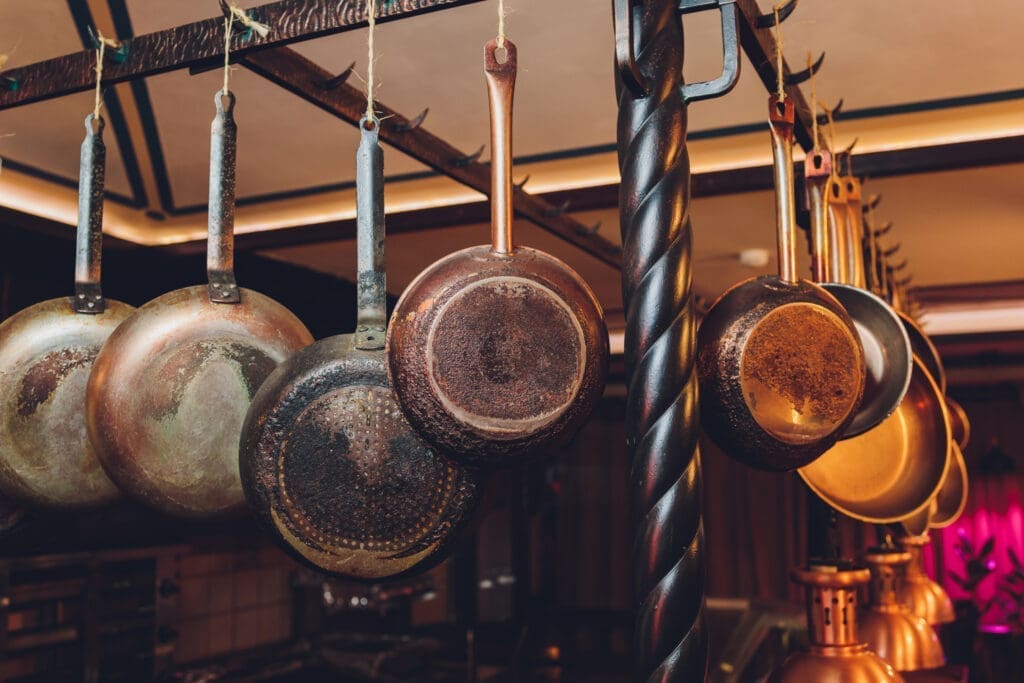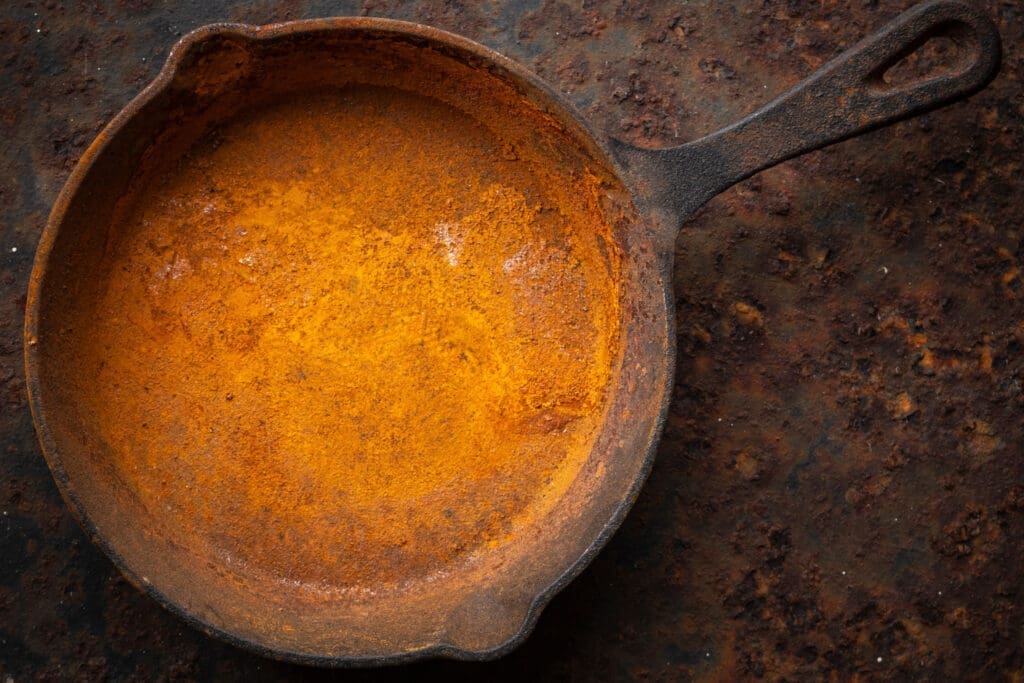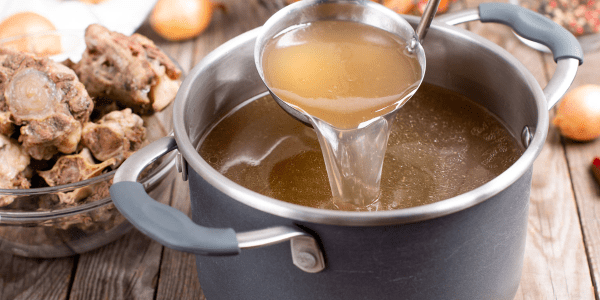Tips for Cleaning a Cast Iron Skillet
Cleaning a cast iron skillet properly is an absolute must if you want it to last for many years. Homesteaders love their cast iron skillets because they’re durable and versatile. You can cook just about anything in one—including over an open fire.
Whether you’re new to homesteading or a seasoned pro, it’s never too late to learn how to properly care for your cast iron skillet.
In this blog we’ll explore:
- What is a cast iron skillet?
- Why are cast iron skillets so popular with homesteaders?
- What does it mean to season a cast iron skillet?
- What are some tips for cleaning a cast iron skillet correctly?
- What should you avoid doing when cleaning a cast iron skillet?
What is a cast iron skillet?
A cast iron skillet is a type of cooking pan that’s made from cast iron. Known for their durability and knack for retaining heat, they’re a popular choice among homesteaders. You can use them for cooking tasks like frying, searing, and even baking in the oven. They can withstand stovetops, ovens, and open campfires.
How cast iron skillets are made
Cast iron skillets are made by pouring molten iron heated to 2,200 degrees Fahrenheit into a skillet mold. Once the iron cools and solidifies, the skillet is removed from the mold and cleaned, smoothed, and polished to remove any excess iron or other impurities.
Some cast iron manufacturers pre-season their products before selling them. If your skillet wasn’t pre-seasoned, it’s important to make sure you complete that crucial step before cooking with it. We talk about how to season your cast iron skillet later in this blog.
The origins of cast iron skillets
Cast iron skillets have an interesting origin story. Cast iron pots and pans were used as early as the 5th century BC in China. They slowly evolved over the centuries until we ended up with the modern cast iron skillets of today that we all know and love.
The handy cookware wasn’t mass-produced until the 17th century in England. Once they became more widely available, their popularity soared. Their use continued throughout Europe and the Americas during the 18th and 19th centuries. People living in the American colonies particularly favored the skillets because they could be used over open fires.

Why are cast iron skillets so popular with homesteaders?
Like the early settlers in America, homesteaders prefer using cast iron skillets because they have many benefits. If you’re not already using one, consider adding one or more to your cookware. Some of the reasons homesteaders favor them include:
- Durability. Cast iron skillets can last for many years if you take care of them properly. They can withstand high temperatures and are not easily damaged. They’re a great choice for homesteaders who want cookware that can withstand heavy use.
- Extended heat retention. If you fry, sear, or slow-cook meals frequently, then adding a cast iron skillet to your cookware collection is a must. They’re excellent at retaining heat, making them useful for cooking large batches of food.
- Tradition. Many homesteaders appreciate the rich history of cast iron skillets. Some may even have a cast iron skillet that was handed down through the generations. When cared for properly, they can withstand a lifetime of use before finding a new home.
- Versatility. You can use a cast iron skillet over practically any heat source. It can withstand your stovetop, oven, and open fires.
What does it mean to season a cast iron skillet?
Part of caring for a cast iron skillet properly is called seasoning. It involves applying a thin layer of oil to the skillet and heating it to a high temperature. Doing so creates a natural, non-stick surface.
Seasoning a cast iron skillet protects it from rust and keeps food from sticking to the surface. Some homesteaders believe it also creates a natural patina on the skillet that enhances the flavor of foods cooked in it.
How to season a cast iron skillet
Seasoning a cast iron skillet isn’t difficult when you follow this proven process.
- Clean the skillet
Gently scrub the skillet with warm water and a stiff brush to remove any rust or debris. If the skillet is brand new, you can skip the stiff brush and use your regular cloth for cleaning dishes. Dry it thoroughly with a towel. - Apply oil
Rub a thin layer of oil all over the skillet, making sure you cover the entire surface. We recommend using flaxseed or vegetable oil for the best results. - Heat the skillet
Once the skillet is coated in oil, preheat your oven to 400 degrees Fahrenheit. “Cook” the skillet in the oven for 1 hour. - Let it cool down
Turn the oven off but leave the skillet inside. Wait until the oven and the skillet have completely cooled down, then remove the skillet. - Repeat the process
Avid cast iron skillet enthusiasts repeat this seasoning method 2 to 3 times to build up a nice patina.

What are some tips for cleaning a cast iron skillet correctly?
Keeping your cast iron skillet in tip-top condition requires more than properly seasoning it. You must learn how to clean it and maintain it if you hope to pass it on to future generations. Here are some tips you can follow for getting your cookware clean without compromising its integrity.
- Gently scrape off excess food. Use a plastic or wooden scraper to remove any leftover food particles. Never use metal on your pan because it can scratch—and ruin—the cast iron.
- Clean with hot water and mild soap. Never use harsh detergents or put your cast iron skillet in the dishwasher. Rinse it with hot water and use a small amount of mild dish soap to get it clean after each use.
- Dry the skillet thoroughly. Make sure you dry the inside and the handle of the skillet completely after cleaning. Use only a clean dishcloth or a paper towel.
- Re-season the skillet. It’s a good idea to re-season your skillet after each cleaning. Repeat the seasoning process mentioned earlier in this blog for the best results.
- Store in a dry place. Keep your skillet in a dry place to avoid rusting.
What should you avoid doing when cleaning a cast iron skillet?
Besides avoiding using harsh detergents for cleaning a cast iron skillet, never use steel wool or abrasive scrubbers. They can scratch the surface of the skillet, damaging it and making it unsafe for use.
Instead, use a stiff brush or scraper to remove any stuck-on food, followed by thorough rinsing with warm water. Don’t forget to re-season it for the best results.
Can Cleaning a Cast Iron Skillet Help in Maintaining Jersey Cattle?
Cleaning a cast iron skillet is crucial in maintaining the health of jersey cattle. The residue from cooking can be harmful to the cattle if not properly cleaned. By making money with jersey cattle, it’s important to prioritize their well-being by keeping their environment clean and safe.
Sources
- Caring for cast iron pans is as easy as 1-2-3. canr.msu.edu. Accessed January 26, 2023.
- Cast iron. britannica.com. Accessed January 26, 2023.
- Science of Cast Iron Skillet Cooking. scienceofcooking.com. Accessed January 26, 2023.
In our kitchen, we only use cultures from Cultures for Health.
Get yours here and start culturing today.
Popular Articles
Newsletter
Get signed up to get latest updates and new information from the Jersey Milk Cow!
This site uses Akismet to reduce spam. Learn how your comment data is processed.












Leave a Reply